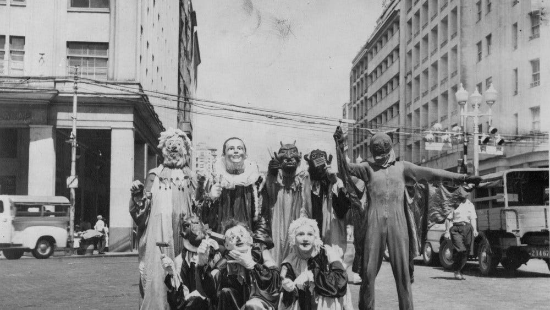By Antonio Pinto
Coming across Neighboring Sounds (2012) years ago was a significant moment in my experience as a young Latin American movie-buff. I had never seen a film that so eloquently employed the style of genre films to engage with the social and psychological complexities of life in Latin America. On the surface, the film portrayed daily life on a city block in Recife. But by making use of the conventions of supernatural films in telling this otherwise slice-of-life story, Kleber Mendonça Filho peered into the psychology of the block’s inhabitants and the way they were all menaced by ghosts of a violent past.
Early on in Aquarius (2016) ghosts make another appearance. This time, as a family gathers for a birthday, bursts of flashbacks remind us that this space, now abounding with the family members of its dignified matriarch, was once the setting for passionate love-making. The ghost in this case is of the woman’s past self, frolicking on the bed, receiving oral sex on top of the drawer where her family members now innocently recline. Here, ghosts aren’t exclusively a violent presence. They are, more broadly, the lives contained in the spaces we inhabit. They are unsettling in as much as they are a stark reminder of the passage of time, of the dead and of the versions of ourselves that persist in that liminal state between life and death. A space amply explored again in Bacurau (2019), about a ghost town – erased from maps but still lingering like a spectral presence. It isn’t surprising then that Mendonça Filho’s latest film has ghosts as its subject.
Pictures of Ghosts, 2023
Pictures of Ghosts (2023) is structured in three chapters. In the first, Mendonça Filho tells the story of the house where he grew up. It is the place where he started making home movies and went on to make dozens of shorts and his first feature. Through the films, we are able to see the house and its surroundings transform over time. We learn how his mother came to resettle in Recife after getting a divorce, how the rooms were repurposed and the house was expanded. The following chapter centers on his lifelong relationship with the city’s downtown movie theaters. He is able to revive the now derelict buildings through home videos he shot decades ago in them. It is a portrait of his young cinephile self, his friendship with an endearing projectionist and a retelling of the stories transmitted through the theater. The final chapter centers around what seems to be the last of the classic theaters still standing in downtown Recife. It also traces the transformation of the other theaters into evangelical churches.
There is an anecdote in the first chapter of the film about a neighbor’s dog. The dog, which featured prominently in Neighboring Sounds, had died years ago when one night Mendonça Filho heard it howling. He narrates this anecdote in a deadpan, goading tone. We are led to believe he is describing a supernatural happening, the conjuring of the dead dog. But, we learn, the reality is that the neighbors were watching the movie on TV. This doesn’t cease to be supernatural, though. There is still something unsettling about it in fact. Film has this ability of allowing us to experience the world of ghosts.
As we are introduced to the affable projectionist whom Mendonça Filho befriended, we are able to see the opportunities that this spectral world provides. Not only is he able to rekindle his relationship with an old friend. Through him, he is able to reconstruct the history of the theater and by extension of the country. The theater, he learns, had been caught in the crosswinds of geopolitics when the Nazis had wanted to use it to disseminate propaganda. The project was disbanded when Brazil severed ties with the Nazis, well into the thirties.
Beyond helping us approach the past, these experiences with ghosts are central to the way we live the present. Towards the end of the film, as we see the landscape transform to reflect the culture of the times, evangelical churches and pharmacies seem to be in a standoff for the future of the city. When we see a theater packed for the screening of a Dario Argento film, we are seeing people come together to face their ghosts. Rather than negate or placate these, as our culture is eager to help us do, cinema stands as a space for a playful encounter with our ghosts and with each other.
The film is narrated in a nostalgic but tongue-in-cheek tone. There is a sequence in which Mendonça Filho appears as a character, placing a call on an old phone that rings eerily through a montage of empty theaters. There are slow pans and zooms that suggest hidden presences in the margins of frames. And, likewise, there is a carefully constructed narrative that stimulates all kinds of associations. The film isn’t any old encounter with ghosts, it’s an encounter led by a master conjurer.
Antonio Pinto (Lima, 1995) studied Hispanic Literature and Linguistics in the Pontificia Universidad Católica del Perú. Since 2021 he has been living in Brooklyn, NY, where he writes and makes films. He posts regularly about film on his newsletter Eddie Cusik. Currently, he is developing his first feature film.




